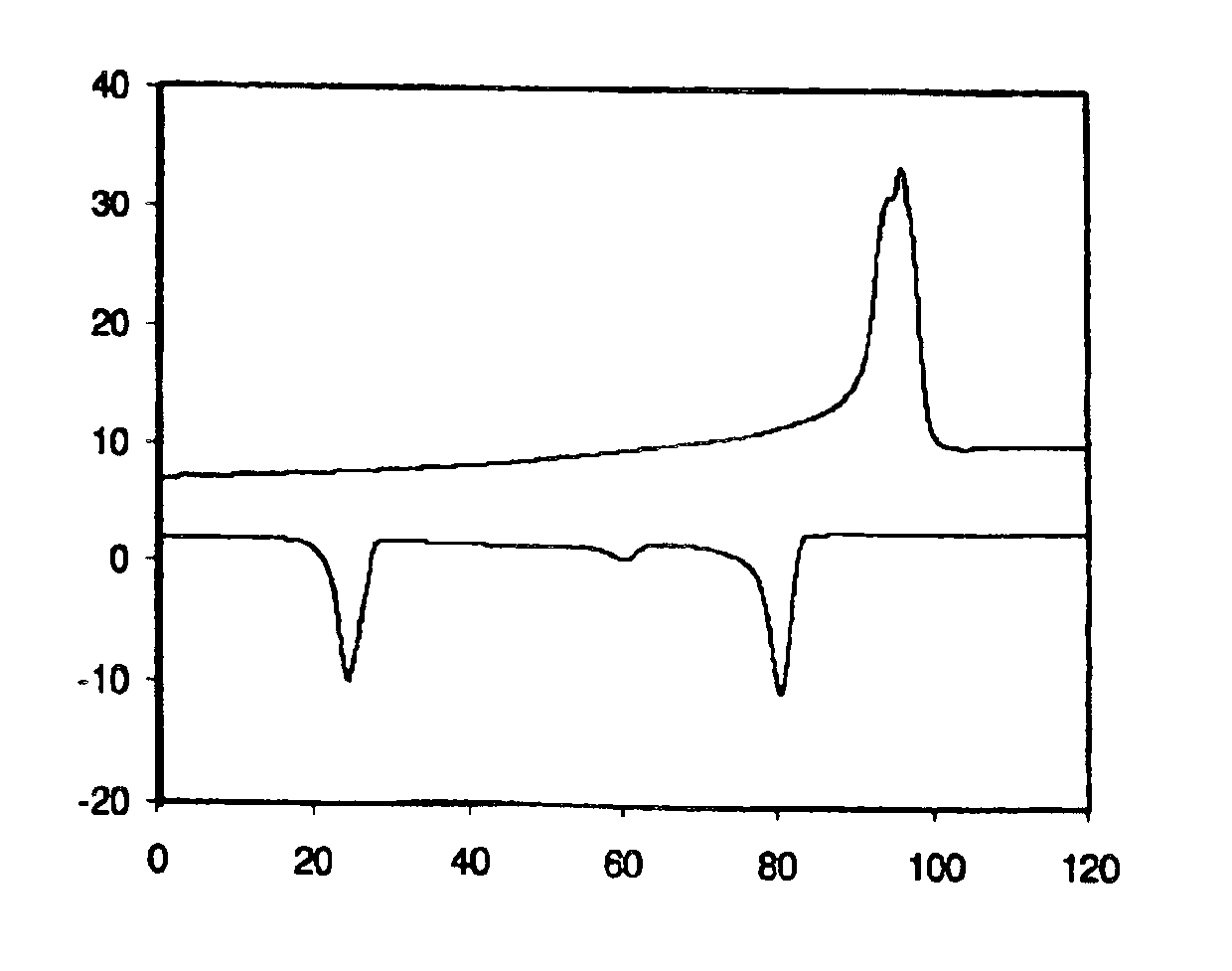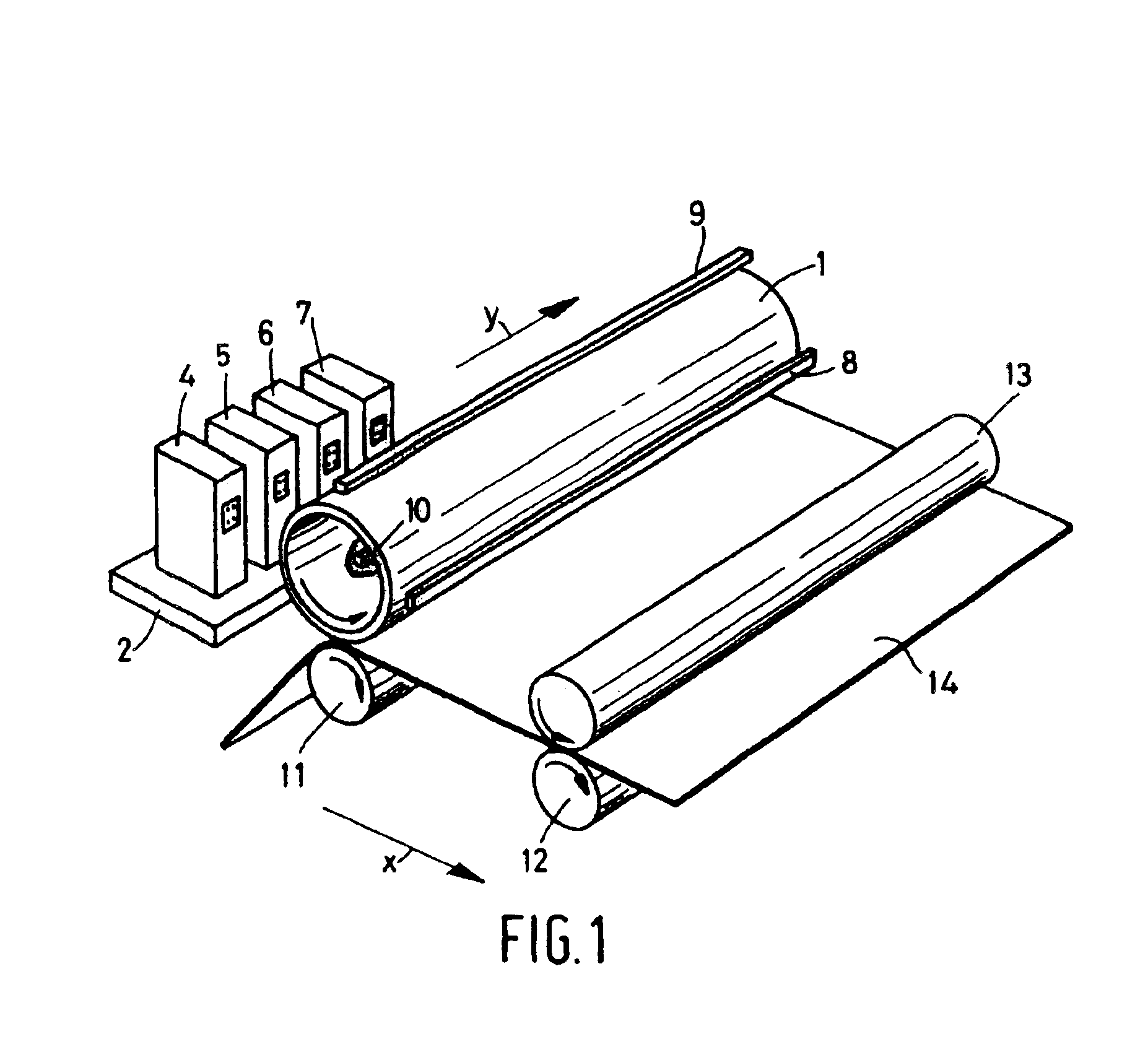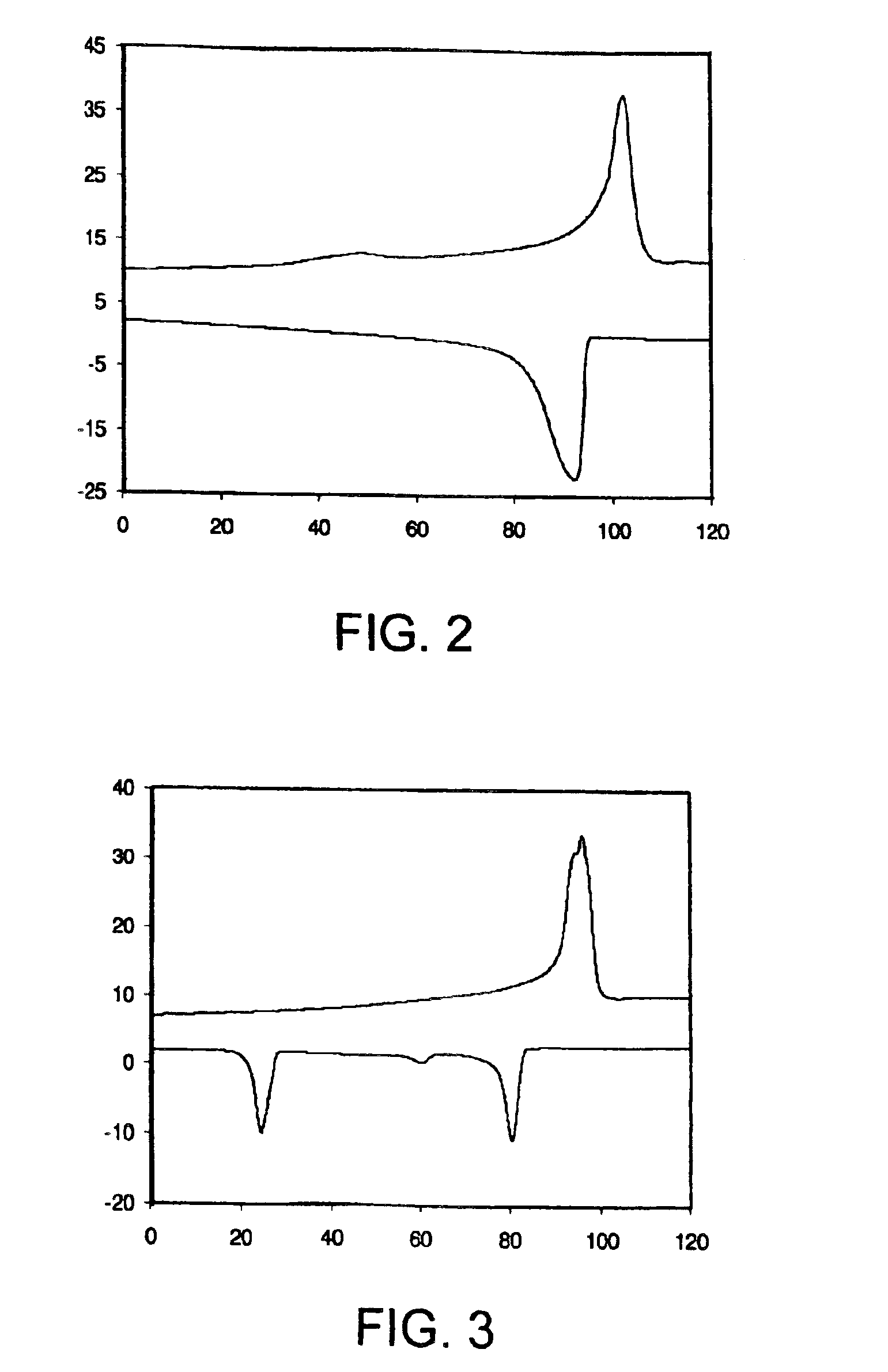Meltable ink for an inkjet printer and a method of selecting such an ink
a technology of inkjet printer and ink drop, which is applied in the field of meltable ink, can solve the problems of insufficient cohesion of ink, adverse effect on print quality, and inability to obtain print quality of this kind with a direct printing process, and achieves small thermal capacity of an individual drop of ink, sufficient cohesion, and specific visco-elastic properties
- Summary
- Abstract
- Description
- Claims
- Application Information
AI Technical Summary
Benefits of technology
Problems solved by technology
Method used
Image
Examples
example 1
[0030]FIG. 1 diagrammatically shows the most important parts of an indirect inkjet method as known from the prior art. The transfer element 1 is disposed centrally in this process and in this case is a hollow aluminum roller. This roller is kept at an elevated temperature by means of a radiator 10 which selectively heats a specific area of the roller. The temperature is kept constant within a margin of a number of degrees by means of a temperature control system (not shown), in such manner that the temperature remains within the bottom limit and the top limit at which the ink is pressure-transferable. The transfer element is provided with a feed element 9 disposed at a distance and serving to provide the surface of the roller with a layer of silicone oil. An image is printed on this layer, which serves as a sacrifice layer, by means of a number of printheads (4, 5, 6 and 7, one for each of the colors cyan, magenta, yellow and black) disposed on a carriage 2. This can be carried out ...
example 2
[0031]It is not possible to predict beforehand whether a specific meltable ink is pressure-transferable. The literature discloses analytical methods to determine whether a specific ink is pressure-transferable, for example U.S. Pat. No. 5,372,852 and the Journal of Imaging Science and Technology, Vol. 40, No. 5, September / October 1996, pages 386 to 389. However, it is also possible to subject a specific ink to a practical test. For this purpose, it is possible to use a printing system which applies an indirect inkjet process as the method. In this example, a generally available printer is used, namely the Phaser 840 Xerox printer. The ink concerned is loaded in the inkjet printhead of this printer and then printing is carried out. It is also possible to use a different printhead to apply the ink to the transfer element, for example, a printhead specially developed to use the ink under test. In principle, any method of applying a thin layer of ink (typically 10 to 100 μm) to the tran...
example 3
[0033]This Example indicates how the transfer yield can be determined at a specific temperature and, if there is a transfer working range, what the top and bottom temperature limits of such range are.
[0034]An explanation will first be given as to how the transfer yield can be determined at a specific temperature of the transfer element. The transfer yield is defined as the optical density of a printed image in the case of a single transfer (i.e., the receiving material has been in contact with the image on the transfer element only once), divided by the optical density in the case of a 100% transfer:
ηT=(OD)T,1 / (OD)100% (1)
where ηT is the transfer yield at a temperature T of the transfer element, (OD)T,1 is the optical density of a single transfer at a temperature T of the transfer element and (OD)100% is the optical density in the case of a 100% transfer. (OD)T,1 is measured with a Gretag densitometer (Gretag D183 OD-meter) by measuring the optical density of the image as transferr...
PUM
| Property | Measurement | Unit |
|---|---|---|
| Dynamic viscosity | aaaaa | aaaaa |
| Dynamic viscosity | aaaaa | aaaaa |
| Dynamic viscosity | aaaaa | aaaaa |
Abstract
Description
Claims
Application Information
 Login to View More
Login to View More - R&D
- Intellectual Property
- Life Sciences
- Materials
- Tech Scout
- Unparalleled Data Quality
- Higher Quality Content
- 60% Fewer Hallucinations
Browse by: Latest US Patents, China's latest patents, Technical Efficacy Thesaurus, Application Domain, Technology Topic, Popular Technical Reports.
© 2025 PatSnap. All rights reserved.Legal|Privacy policy|Modern Slavery Act Transparency Statement|Sitemap|About US| Contact US: help@patsnap.com



